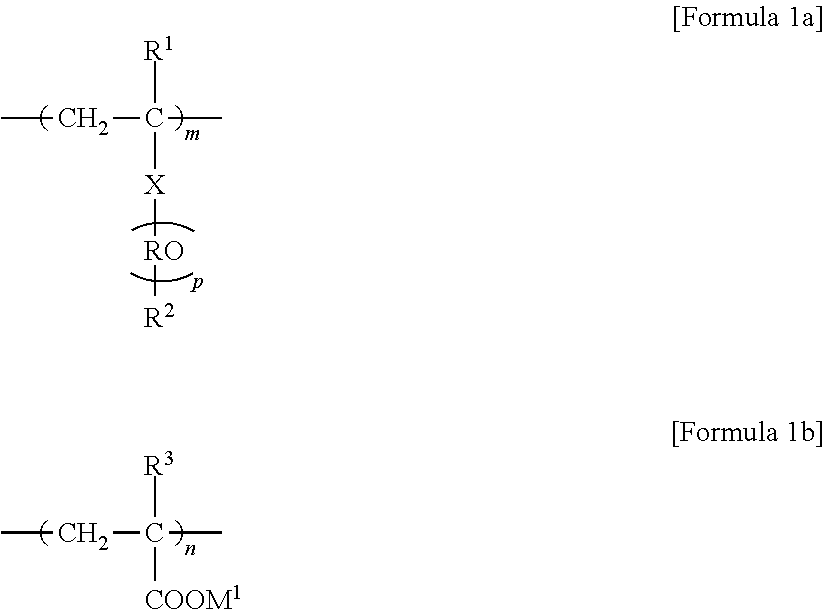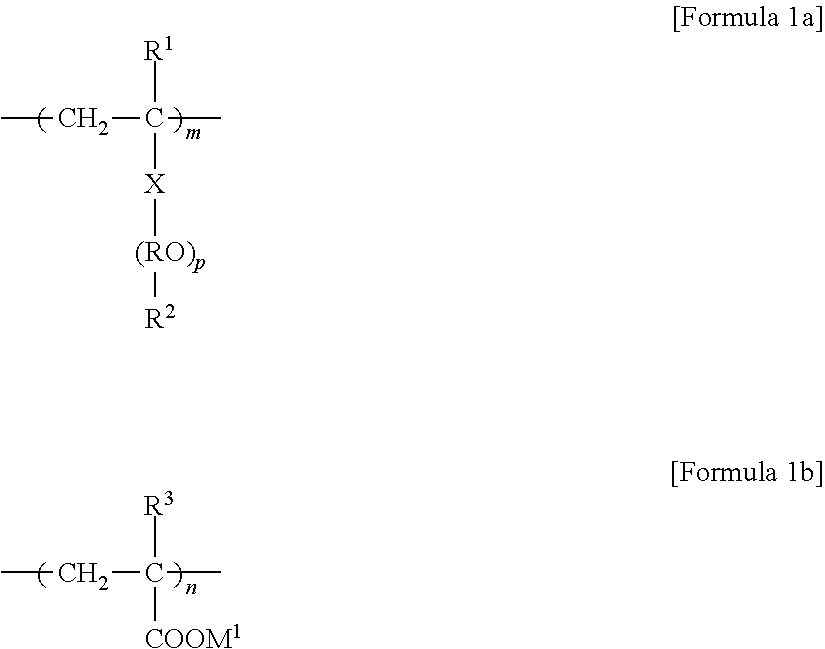Superabsorbent Polymer and Preparation Method Thereof
a superabsorbent polymer and polymer technology, applied in the super field, can solve the problems of reducing productivity, difficult to perform uniform surface crosslinking, and reducing absorbency under pressure and permeability, and achieve excellent absorption rate without increasing specific surface area. , the effect of reducing the content of fine particles in the superabsorbent polymer
- Summary
- Abstract
- Description
- Claims
- Application Information
AI Technical Summary
Benefits of technology
Problems solved by technology
Method used
Image
Examples
preparation example 1
[0167]400 g of acrylic acid was added to a 2 L glass beaker, to which 719.5 g of a 24.3% aqueous sodium hydroxide solution was slowly poured and mixed to prepare a first solution. At this time, neutralization heat was generated, and the mixed solution was stirred at room temperature and cooled to about 41° C.
[0168]Subsequently, a second solution prepared by adding 0.200 g of polyethylene glycol diacrylate (PEGDA 600), 0.02 g of 1,6-hexanediol diacrylate, and 0.045 g of dioctyl sulfosuccinate sodium salt (AOT) to 50 g of acrylic acid; 35 g of a 0.31% aqueous ascorbic acid solution (a third solution); and a solution prepared by diluting 1 g of hydrogen peroxide and 0.69 g of potassium persulfate in 40 g of distilled water (a fourth solution) were sequentially added to the first solution, and mixed with each other by stirring.
[0169]When the mixed solution stirred in the beaker was gelled and stirring was stopped, the gel was immediately poured in a vat-type tray (15 cm in width x 15 cm...
preparation example 2
[0173]400 g of acrylic acid was added to a 2 L glass beaker, to which 616.7 g of a 24.3% aqueous sodium hydroxide solution was slowly poured and mixed to prepare a first solution. At this time, neutralization heat was generated, and the mixed solution was stirred at room temperature and cooled to about 41° C.
[0174]Subsequently, a solution prepared by adding 0.200 g of polyethylene glycol diacrylate (PEGDA 600), 0.02 g of 1,6-hexanediol diacrylate, and 0.045 g of dioctyl sulfosuccinate sodium salt (AOT) to 50 g of acrylic acid (a second solution); 35 g of a 0.31% aqueous ascorbic acid solution (a third solution); and a solution prepared by diluting 1 g of hydrogen peroxide and 0.69 g of potassium persulfate in 40 g of distilled water (a fourth solution) were sequentially added to the first solution, and mixed with each other by stirring.
[0175]When the solution stirred in the beaker was gelled and stirring was stopped, the gel was immediately poured in a vat-type tray (15 cm in width×...
preparation example 3
[0179]400 g of acrylic acid was added to a 2 L glass beaker, to which 781.2 g of a 24.3% aqueous sodium hydroxide solution was slowly poured and mixed to prepare a first solution. At this time, neutralization heat was generated, and the mixed solution was stirred at room temperature and cooled to about 41° C. Subsequently, a second solution prepared by adding 0.200 g of polyethylene glycol diacrylate (PEGDA 600), 0.02 g of 1,6-hexanediol diacrylate, and 0.045 g of dioctyl sulfosuccinate sodium salt (AOT) to 50 g of acrylic acid; 35 g of a 4% aqueous ascorbic acid solution (a third solution); and a solution prepared by diluting 1 g of hydrogen peroxide and 0.69 g of potassium persulfate in 40 g of distilled water (a fourth solution) were sequentially added to the first solution, and mixed with each other by stirring.
[0180]When the solution stirred in the beaker was gelled and stirring was stopped, the gel was immediately poured in a vat-type tray (15 cm in width×15 cm in length). The...
PUM
| Property | Measurement | Unit |
|---|---|---|
| density | aaaaa | aaaaa |
| particle size | aaaaa | aaaaa |
| volume ratio | aaaaa | aaaaa |
Abstract
Description
Claims
Application Information
 Login to View More
Login to View More - R&D
- Intellectual Property
- Life Sciences
- Materials
- Tech Scout
- Unparalleled Data Quality
- Higher Quality Content
- 60% Fewer Hallucinations
Browse by: Latest US Patents, China's latest patents, Technical Efficacy Thesaurus, Application Domain, Technology Topic, Popular Technical Reports.
© 2025 PatSnap. All rights reserved.Legal|Privacy policy|Modern Slavery Act Transparency Statement|Sitemap|About US| Contact US: help@patsnap.com


